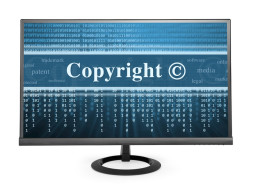In the previous blog post, we described the Broadcasting Commission of Jamaica’s origins and discussed some of our accomplishments to date. Today, we continue the celebration of our achievements and the reflection on the actions that we need to take to move forward.
In the 26 years that the Broadcasting Commission has been in operation, we have accomplished several of our initial goals. In addition to those previously discussed, we have radically reformed the content quality of the broadcast media. This has happened in part due to the introduction of the Children’s Code for Programming which took effect in 2003. This Code aims to limit children’s exposure to harmful violence, sex and language in the broadcast media by establishing systems of scheduling and rating, by mandating that licensees should provide advisories, and by establishing penalties for breaches. Because of this code, parents can now—by looking at ratings for television programmes—decide which are appropriate for their children to watch.
Though this Code has severely decreased the number of times lewd or violent content has been broadcast on radio or television, the chance still remains that some of this inappropriate content may intentionally or unintentionally be broadcast. We are currently in the process of acquiring an automated content monitoring system. Until this time, we have sought to address this problem by training more than 213 volunteers in our Citizen Based Media Monitoring Programme to spot and report breaches of the Children’s Code—a significant accomplishment. At the same time, recognizing that the media landscape is dynamic and requires new approaches over time, an extensive review of the Children’s Code for Programming is currently underway.
We have also laid the foundations for island-wide wireless digital cable by licensing mobile television service and by inviting applicants for IPTV (Internet Protocol Television) licences. Internet Protocol Television refers to a television service delivered via the Internet rather than through satellite, terrestrial or cable television formats.
Additionally, we have sought to prepare the Jamaican population for the digital switchover in 2015. We have helped to form a National Steering Committee comprised of members from the government, the industry, and from corporate and civil society aimed at planning and managing this process. In addition to this, we have embarked on an extensive campaign educating the public on the digital transition and its implications. As we as a society transition to the use of digital platforms, we have also embarked on a digital literacy campaign advising the general public on how to use emerging forms of media responsibly.
We have also contributed to the fight against the unethical practice of payola by fighting for its criminalization. We have formally recommended to the government that payola should carry a fine of up to J$15 million. Moreover, we have developed measures to sustainably manage airplay within broadcasting stations, such as keeping records of playlists and programme logs.
Recently, we also released a series of public service announcements entitled ‘Under the Law,’ which are aimed at educating Jamaicans on their rights as consumers of the broadcast media. These videos may be viewed on Youtube.
This is only a sample of all that we have been accomplishing as we have been working dutifully in the background. Of course, though we have accomplished much, there is still much more to be done. We have already developed a three-year corporate plan which has guided much of our action. We are currently working to achieve more of these goals, which include further legislative reform and research into the industry, into audience needs, and into digital switchover. We are also beginning to establish relationships with our neighbouring islands, with whom we can work together to harmonise an approach towards maintaining content standards and transitioning to a digital future.
(90)







